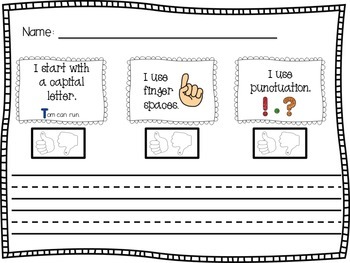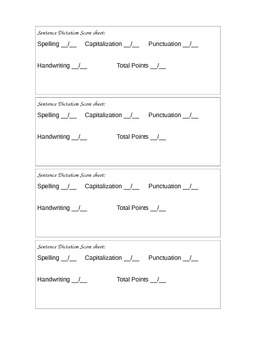Chapter 2: Assessment and Grouping
So I am not a fan or testing, testing, testing. This is not fun for me and it is definitely NOT what the kids want to do either. However, these are necessary to figure out where our students are coming from and where they are moving to. These assessments will help you gather information and group students accordingly. Early readers will need more variety of assessments than more fluent readers. Some of the Early Reader Assessments can be found below:
This gem is from Julie at Make, Take and Teach. Her post on Sight Word and Progress Monitoring Sight Words can be found here.
Dictated Sentences that are useful to see what a child can do without any help. The benefit to this is to understand how the child processes sounds with words they come to that they do not understand. The on the left is from Kimberly Savage and can be found here. The one on the right is from Teacher Mermaid and it can be found here.
Writing Samples are helpful for four main reasons:
- Oral Language and Vocabulary - how broad is their understanding of vocabulary words, and is it interesting?
- Visual Memory - Sight Words are they spelled correctly?
- Phonemic Awareness - Is the student hearing words correctly?
- Concepts of Print - Did the student write left to right?
Another important tool used for assessment in Guided Reading are Running Records. My district uses Reading A-Z, which has an excellent tool for Running Records, and that teamed with our PALS website there isn't much work to be done, but if you don't have these things at your disposal than you need to first determine the Accuracy Level (the number of words read accurately-which includes errors corrected-by the total number of words in the passage) Next, you need to Analyze the Errors, in which you look at meaning, structure and visual cues. Then, you are going to Analyze Strategies does the student self-monitor, cross check, and self-correct? The next step with Running Records is to Assess Fluency. Here is a fluency chart below. Which can also be found here.
The fifth step in implementing Running Records is to Assess Comprehension. This is important to see if the student understands the text. You should not expect 100% comprehension but between 75 - 80% is considered that the student sufficiently understood the passage.
So - now that you have all of this information at your fingertips "Now What?" Look to see where the student has a weakness and target your instruction there.
I am loving this chapter because there are so many tools included in the chapter that helps determine a students' comprehension and other Assessment tools for older students as well. Probably the best section of all the chapters is a "Question Section" at the back of the chapter. So while I've read through this chapter, the majority of the questions I've had throughout the chapter is all answered right there!
Have a Happy Wednesday!







No comments:
Post a Comment